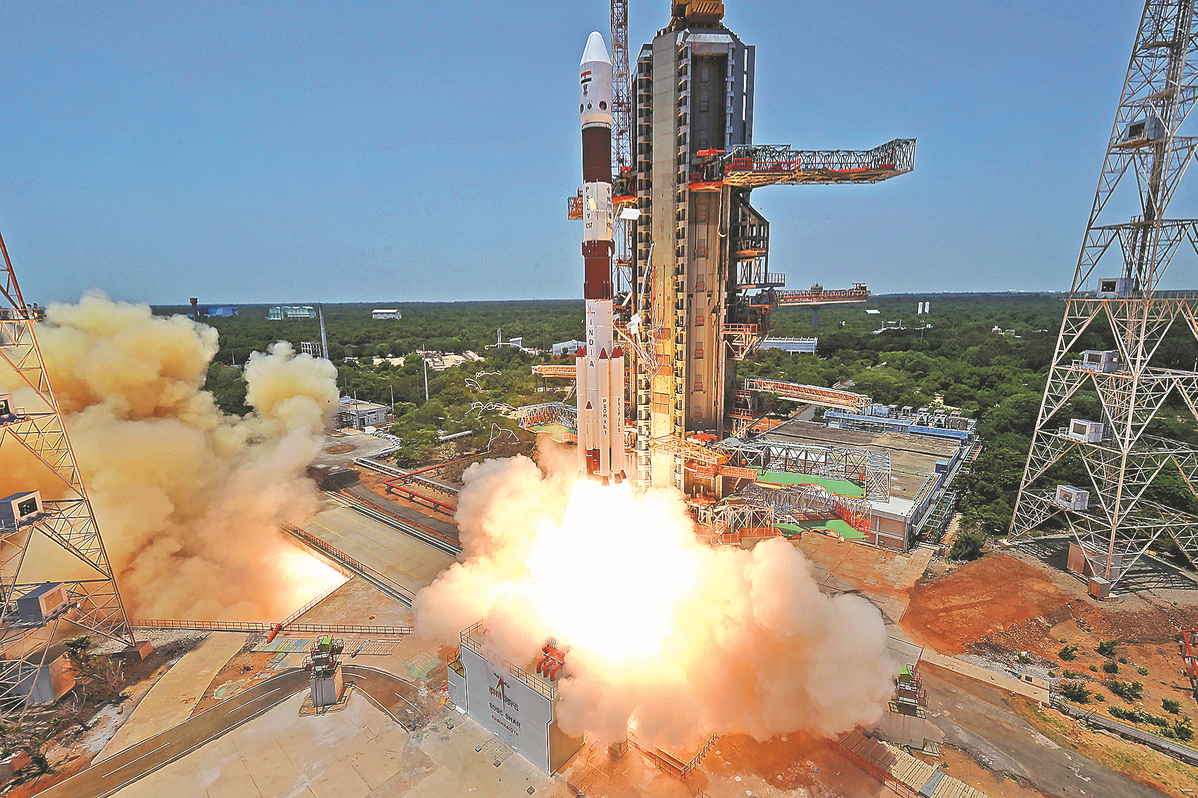After the moon, India's rocket sets eyes on sun
By XU WEIWEI in Hong Kong, APARAJIT CHAKRABORTY in New Delhi and ARUNAVA DAS in Kolkata, India | China Daily Global | Updated: 2023-09-04 09:47

India's success in launching its solar mission, less than two weeks after an uncrewed landing near the moon's south pole, bears its own significance, analysts say.
The Indian Space Research Organisation has confirmed India launched its maiden solar mission "Aditya-L1" on Saturday, onboard the PSLV-C57 rocket at Satish Dhawan Space Centre in Sriharikota, Andhra Pradesh state.
"The Aditya-L1 will be the first Indian space-based observatory-class solar mission to unlock the mysteries of the sun," the ISRO said earlier.
Swaran Singh, professor for diplomacy and disarmament at Jawaharlal Nehru University in New Delhi, said the launch of Aditya-L1 and Chandrayaan-3's landing on the moon's south pole are not just milestone achievements in India's space exploration, but also hold deeper significance.
"It especially demonstrates the genius of India's scientists who have ... come to be known for their cost-effective missions that must inspire nations of the Global South that can aspire to ... engage with frontiers of science and also hope to build partnerships with India."
Aditya-L1 separated from the launch vehicle about an hour after the rocket blasted off. It is said to be one of the longest Polar Satellite Launch Vehicle missions.
Science and Technology Minister Jitendra Singh and ISRO Chairman S. Somanath were among those at the launch event.
The mission will take 125 days to reach its destination, Lagrange Point 1, nearly 1.5 million kilometers from Earth, to observe the sun without any interruptions, astrophysicist Sandip Chakrabarti said.
"While the payloads are not so challenging, and perhaps similar to what others sent about 50 years ago, the instruments cover a wide spectrum of radiation and particles emitted by the sun."
The Indian solar community is expected to benefit from this mission, Chakrabarti said.
V. Adimurthy, former associate director at Vikram Sarabhai Space Center in India and former dean of R&D at Indian Institute of Space Science and Technology, said it is another complex mission.
"We have carefully studied everything, and it is progressing. We have all taken serious efforts to make it a success. It is a collective effort. We have done suitable modification to reach where we want to reach."
Major objectives
The major objectives of the solar mission are understanding coronal heating and solar wind acceleration, initiation of coronal mass ejection, flares and near-Earth space weather, coupling and dynamics of the solar atmosphere, and solar wind distribution, the Indian space agency said.
Shantanu Bhowmik, professor from the department of aerospace engineering at Amrita Vishwa Vidyapeetham university, said that by studying how long the sun will continue to give heat, climate mitigation activities can take place because the lasting power of the ozone layer can be determined.
The mission is particularly complex because the spacecraft has to cross various radiation belts to reach the sun's orbit, Bhowmik said.
The estimated cost of the solar mission is said to be about $48.36 million. It is fitted with a solar panel to draw energy from the sun for its normal functioning.
Aparajit Chakraborty and Arunava Das are freelance journalists for China Daily.
























